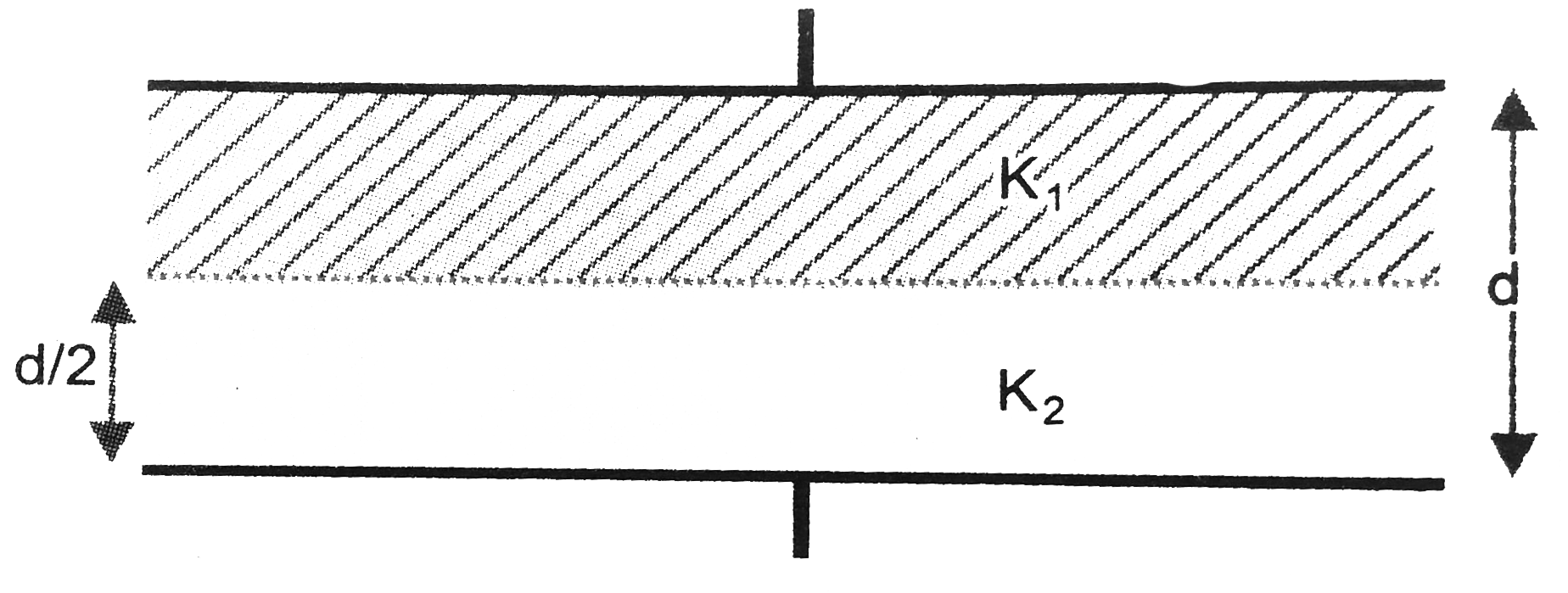What is capacitance?
Step-by-Step Solution:
1. Definition of Capacitance:
Capacitance is a property of a capacitor that indicates its ability to store electric charge. It is defined as the amount of electric charge (Q) that can be stored per unit potential difference (V) across the capacitor.
2. Mathematical Relation:
The relationship between charge (Q), capacitance (C), and potential difference (V) can be expressed mathematically as:
Q=C×V
From this equation, we can derive the formula for capacitance:
C=QV
3. Interpretation of Capacitance:
Capacitance can also be interpreted as the ratio of the change in stored charge to the change in potential difference. This means that if the potential difference across a capacitor changes, the amount of charge stored will also change proportionally.
4. Units of Capacitance:
The SI unit of capacitance is the Farad (F), which is defined as one coulomb per volt (1 F = 1 C/V). This unit indicates how much charge a capacitor can store for a given voltage.
5. Conclusion:
In summary, capacitance is a measure of a capacitor's ability to store electric charge, defined mathematically as the ratio of charge stored to the potential difference across it.
---
Capacitance is a property of a capacitor that indicates its ability to store electric charge. It is defined as the amount of electric charge (Q) that can be stored per unit potential difference (V) across the capacitor.
The relationship between charge (Q), capacitance (C), and potential difference (V) can be expressed mathematically as:
Q=C×V
From this equation, we can derive the formula for capacitance:
C=QV
Capacitance can also be interpreted as the ratio of the change in stored charge to the change in potential difference. This means that if the potential difference across a capacitor changes, the amount of charge stored will also change proportionally.
The SI unit of capacitance is the Farad (F), which is defined as one coulomb per volt (1 F = 1 C/V). This unit indicates how much charge a capacitor can store for a given voltage.
In summary, capacitance is a measure of a capacitor's ability to store electric charge, defined mathematically as the ratio of charge stored to the potential difference across it.
Topper's Solved these Questions
- ELECTROSTATIC POTENTIAL AND CAPACITANCE BOOK - MODERN PUBLICATIONCHAPTER - ELECTROSTATIC POTENTIAL AND CAPACITANCE EXERCISE - Revision Exercises (Additional Questions)
10 Videos
- ELECTROSTATIC POTENTIAL AND CAPACITANCE BOOK - MODERN PUBLICATIONCHAPTER - ELECTROSTATIC POTENTIAL AND CAPACITANCE EXERCISE - Revision Exercises (Fill in the Blanks)
11 Videos
- ELECTROSTATIC POTENTIAL AND CAPACITANCE BOOK - MODERN PUBLICATIONCHAPTER - ELECTROSTATIC POTENTIAL AND CAPACITANCE EXERCISE - Higher Order Thinking Skills & Advanced Level (QUESTIONS WITH ANSWERS)
10 Videos
- ELECTROMAGNETIC WAVESBOOK - MODERN PUBLICATIONCHAPTER - ELECTROMAGNETIC WAVESEXERCISE - CHAPTER PRACTICE TEST
14 Videos
- MAGNETISM AND MATTERBOOK - MODERN PUBLICATIONCHAPTER - MAGNETISM AND MATTEREXERCISE - CHAPTER PRACTICE TEST FOR BOARD EXAMINATION
16 Videos
Similar Questions
Knowledge Check
What is the capacitance of a spherical conductor with radius 1 m?
A10−6FB10−3FC1.1×10−10FD9×10−9FThe earth has volume 'V' and surface area 'A'. What is the capacitance of the earth?
A4πε0AVB4πε0VAC12πε0VAD12πε0AVA parallel plate capacitor of area ‘A’ plate separation ‘d’ is filled with two dielectrics as shown. What is the capacitance of the arrangement ?
 A3Kε0A4dB4Kε0A3dC(K+1)ε0A2dDK(K+3)ε0A2(K+1)d
A3Kε0A4dB4Kε0A3dC(K+1)ε0A2dDK(K+3)ε0A2(K+1)d
A parallel plate capacitor is filled with dielectrics as shown in Fig. What is its capacitance ?

View SolutionWhat is the capacitance between the points P and Q in the following combination of capacitors?

View SolutionA spherical drop of capacitance 12μF is broken into eight drops of equal radius. What is the capacitance of each small drop in μF?
View SolutionWhat is the capacitance of arrangement of 4 platges each of area A at a distance d in air in Fig.

View SolutionFour identical plates each of area a are separated by a distance d. The connection is shown below . What is the capacitance between P and Q?

View Solution
